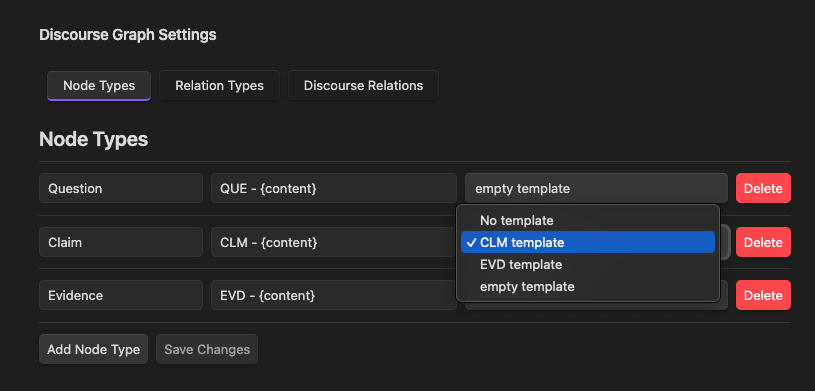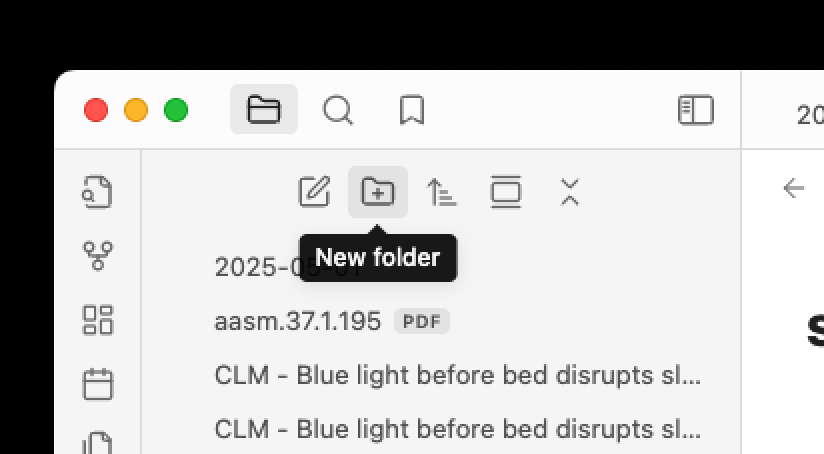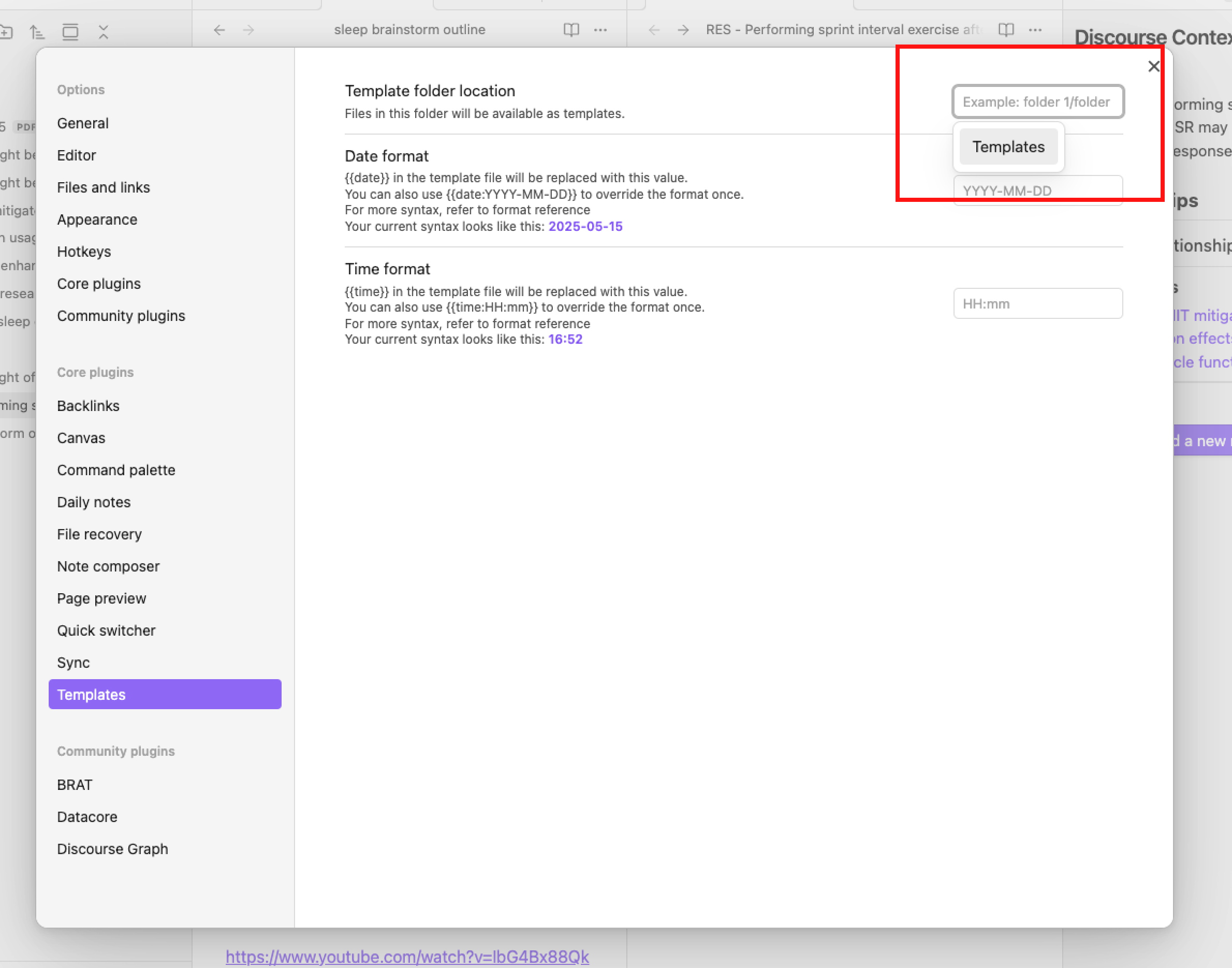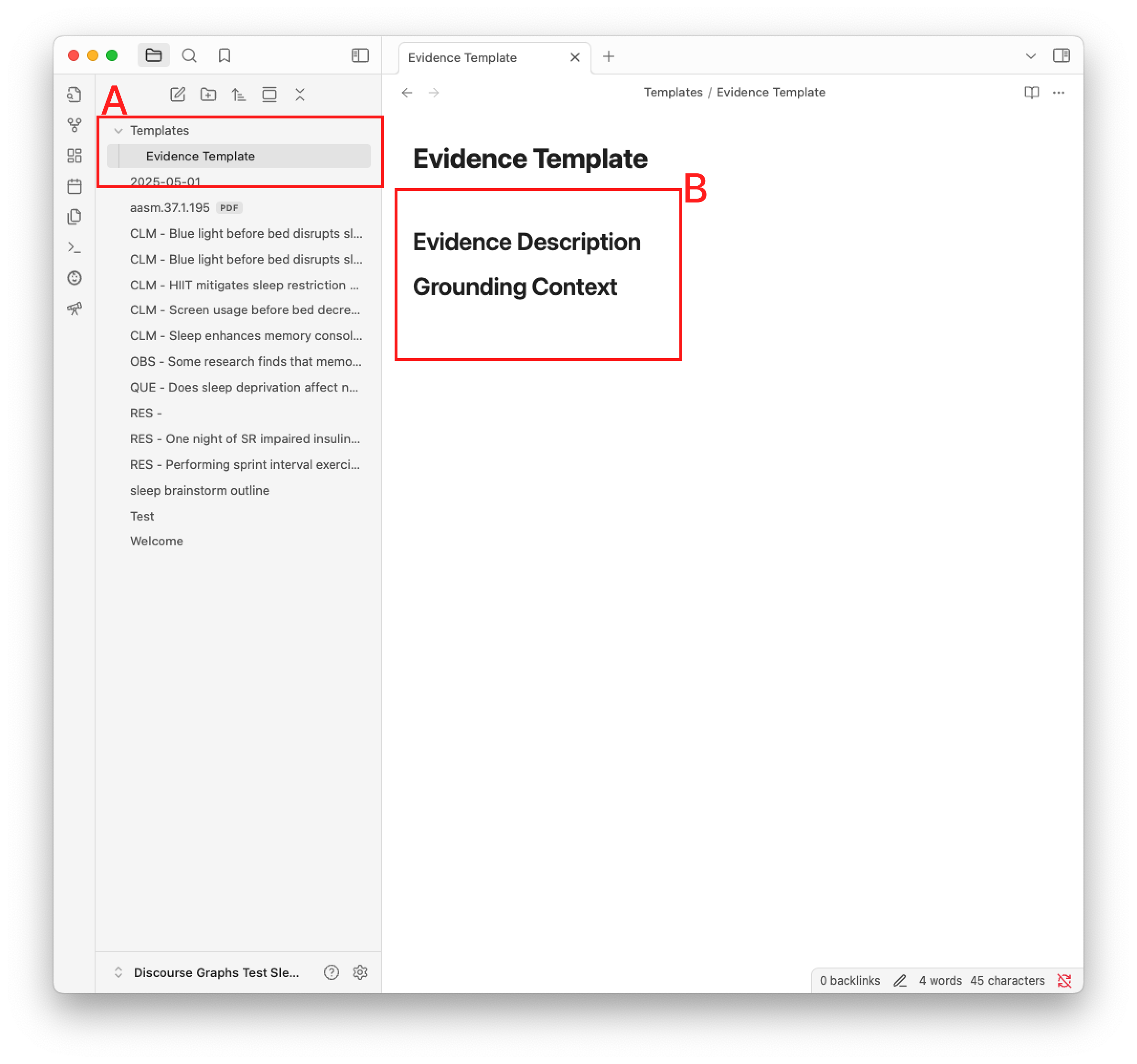Node Types & Templates
Configuring Node Types
Node types are the building blocks of your discourse graph. Each node type represents a different kind of content or concept in your notes.
Adding a Node Type
- Under "Node Types," click "Add Node Type"
- Enter a name for your node type (e.g., "Claim", "Evidence", "Question")
- Add the format for your node type. eg a claim node will have page title "CLM - {content}"
- Template (Optional): Select a template from the dropdown to automatically apply template content when creating nodes of this type
-
Templates are sourced from Obsidian's core Templates plugin
-
Ensure you have the Templates plugin enabled and configured with a template folder
-
The dropdown will show all available template files from your configured template folder

-
Click "Save Changes"
-
Working with Templates
Templates allow you to automatically add predefined content when creating new nodes. They're especially useful for maintaining consistent structure across similar types of notes.
Setting Up Templates
-
Create a new folder for templates

-
Configure the template folder location in settings

-
Create template files

Template Requirements
- Templates must be stored in your designated template folder
- The Templates core plugin must be enabled
- Template files should use Markdown format
- Templates can include any valid Markdown content